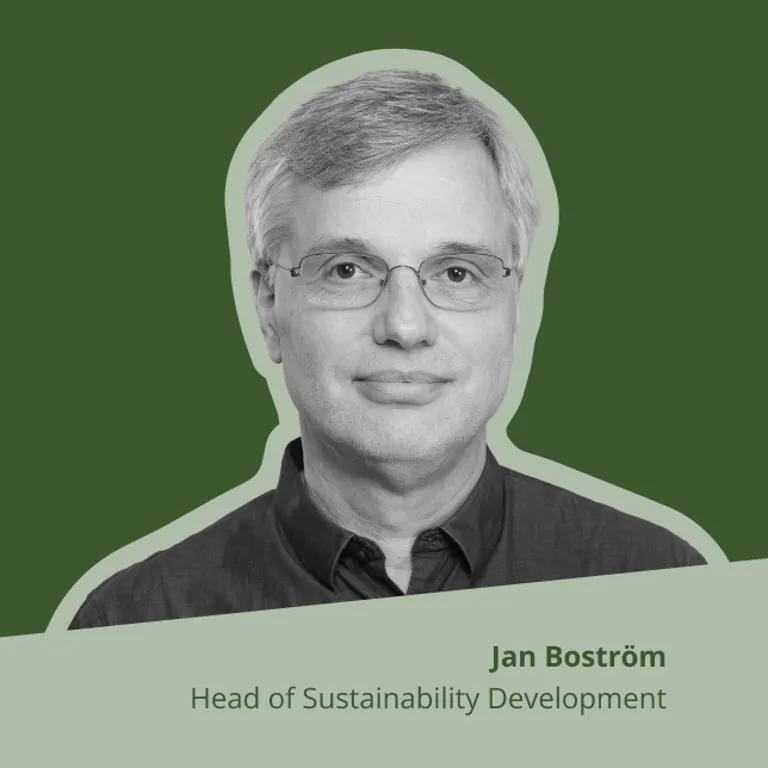Can the construction industry really become sustainable?
There is a lot of focus on sustainability at the moment, not least in the construction industry. Whoever you ask, sustainability is important, but what is the actual situation in this regard?

Can the construction industry really become fully sustainable or are we just talking about making it somewhat less unsustainable?
According to a few years old EU report, the union’s construction industry accounts for 5-12% of greenhouse gas emissions*, more than 35% of all waste and 50% of the extraction of virgin raw materials**. This is of course not sustainable, but can we bring about change? For example, will the use of new bio-based materials, a higher percentage of recycled materials in products, products with a lower CO₂eq (carbon dioxide equivalent) footprint, or perhaps AI, be able to solve the issue? These initiatives are necessary, but do not really solve the fundamental problem. Because, while we continue to dig up and extract large amounts of virgin raw materials and then, over time, turn them into waste while emitting large amounts of greenhouse gases, we are not sustainable.
Since the 1990s, the total CO₂eq footprint of the Swedish construction industry has dropped significantly, which is of course a good thing. But if you look more closely, it is basically only the footprint from the running of the buildings that has decreased, primarily as a result of improved energy efficiency. The CO₂eq footprint for the actual construction of the buildings has remained virtually unchanged. This is of course one of the reasons for Sweden having had a legal requirement for climate declarations to be made for new buildings since 2022. Climate declarations are an important step in the right direction. They broaden the focus from just reducing the energy consumption involved in running a building, and thus reducing emissions, to also looking at what happens when the building is constructed and its components are manufactured.
The key issue and the solution
The key issue is the long-term value of building materials. At the moment, in economic terms the majority of what a building consists of is not worth using again. There are some exceptions, but in general it is almost always cheaper to use new materials than to try to reuse existing materials. This situation must change if the construction industry is to become fully sustainable.
One way is to make it more expensive to use new materials, and another is to make it easier and therefore cheaper to reuse existing ones. Personally, I believe more in the latter option, as the first one implicitly means that the total cost of construction would go up, at least initially. This is not something we as a society currently need.
So, how can we make it easier and cheaper to reuse construction materials? Or, to put it another way, how can we extend the value of building materials? At an overall level, it is quite simple:
- By far the easiest way to extend the value of building materials is to let them continue to fulfil their function where they already are, i.e. keep buildings and adapt them as needs change, instead of demolishing them.
- When the building material is no longer needed, it must be possible to dismantle and then reuse it in such a way that it loses as little of its value as possible.
Unfortunately, it is not quite that simple with regard to the details. To achieve the above, we need:
- Transformation capacity
Design buildings so that their function can be changed without being too expensive and without having to destroy a lot of building materials. This is what we call transformation capacity, which focuses on the design of the building, and where different things are placed, etc.
- Reuse potential
Assemble the different parts so that they can be taken apart again without damaging them. This relates mostly to how things are assembled. In general terms, for example, screwing is better than gluing, although there are far more aspects than that to take into account, such as reducing the dependency between different parts.
- Digital information bank
Make sure to have detailed information available about what is in a building when it is time to reuse the products. This involves creating a data bank with detailed information that remains available and can be used to answer questions that may arise in perhaps 10 or 50 years. As it is rather naive to think that we know today exactly what questions will be asked in 50 years, the safest strategy is to store as much information as possible about the various products.
So, the work is very much about doing the right thing now in order to reap benefits in the future, often quite far into the future. But that’s actually quite understandable, as we need to keep two goals in mind at the same time: Doing what we can to make the construction industry less unsustainable already today, while at the same time laying the foundations for having a fully sustainable construction industry in the future.
“To create a built environment that is valuable and sustainable in the long term, buildings need to be designed in such a way that it is cost effective to reuse them and their components, at the same or at a higher value.”
Jan Boström
Head of Sustainability Development
iBinder Group
*Operations not included
**Virgin raw materials are what we extract from nature for the first time; usually materials that we dig up from a mine or cut down in a forest
